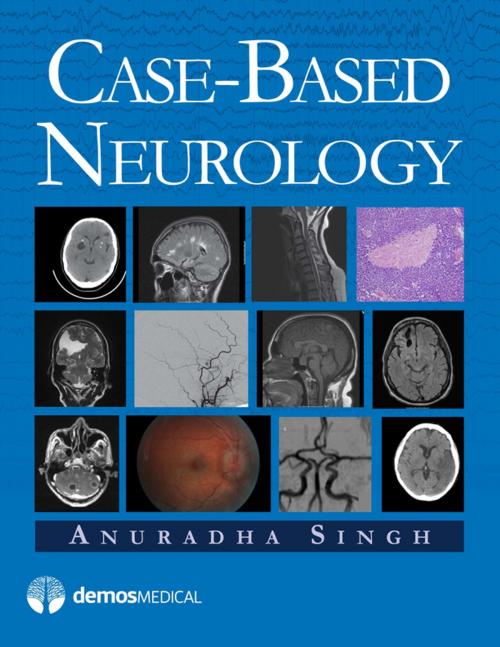Case-Based Neurology
Nonfiction, Health & Well Being, Medical, Specialties, Internal Medicine, Neurology| Author: | Anuradha Singh, MD | ISBN: | 9781935281924 |
| Publisher: | Springer Publishing Company | Publication: | December 23, 2011 |
| Imprint: | Demos Medical | Language: | English |
| Author: | Anuradha Singh, MD |
| ISBN: | 9781935281924 |
| Publisher: | Springer Publishing Company |
| Publication: | December 23, 2011 |
| Imprint: | Demos Medical |
| Language: | English |
If it is true that a picture is worth a thousand words, a visual memory of a good clinical case will be retained and absorbed in a way that traditional text readings are not. Abundantly illustrated throughout, Case-Based Neurology offers an overview of a wide range of common neurological conditions. Organized by chief complaint and presented in a consistent format, each case includes history, "stop and think" questions, physical examination, laboratory testing, imaging findings, diagnosis, and discussion, including differential diagnosis and treatment. References and suggested readings follow for further study.
Case-Based Neurology provides a broad selection of cases drawn from all major areas of neurology including critical care and trauma, epilepsy, movement disorders, stroke, neurodegenerative diseases, spinal cord pathologies, neuro-oncology, neuromuscular and peripheral nervous system disorders, neuro-immunology, and neuro-infectious diseases. As the reader works through the cases, the importance of careful history taking, thorough examination, and ordering appropriate diagnostic studies is reinforced as it becomes apparent that the same chief complaint can lead to totally different diagnoses. Controversies in management are addressed within the case discussions to highlight differences in treatment philosophy and help sharpen clinical acumen.
Features of Case-Based Neurology include:
- Case-based format that simulates clinical situations and builds diagnostic skills
- Effective teaching and learning tool - ideal for Board preparation
- Covers a wide range of common neurological conditions and typical and atypical disease presentations
- Differential diagnosis, treatment, and controversies in management are incorporated in case discussions
- Key clinical findings are documented with high-quality images throughout
If it is true that a picture is worth a thousand words, a visual memory of a good clinical case will be retained and absorbed in a way that traditional text readings are not. Abundantly illustrated throughout, Case-Based Neurology offers an overview of a wide range of common neurological conditions. Organized by chief complaint and presented in a consistent format, each case includes history, "stop and think" questions, physical examination, laboratory testing, imaging findings, diagnosis, and discussion, including differential diagnosis and treatment. References and suggested readings follow for further study.
Case-Based Neurology provides a broad selection of cases drawn from all major areas of neurology including critical care and trauma, epilepsy, movement disorders, stroke, neurodegenerative diseases, spinal cord pathologies, neuro-oncology, neuromuscular and peripheral nervous system disorders, neuro-immunology, and neuro-infectious diseases. As the reader works through the cases, the importance of careful history taking, thorough examination, and ordering appropriate diagnostic studies is reinforced as it becomes apparent that the same chief complaint can lead to totally different diagnoses. Controversies in management are addressed within the case discussions to highlight differences in treatment philosophy and help sharpen clinical acumen.
Features of Case-Based Neurology include:
- Case-based format that simulates clinical situations and builds diagnostic skills
- Effective teaching and learning tool - ideal for Board preparation
- Covers a wide range of common neurological conditions and typical and atypical disease presentations
- Differential diagnosis, treatment, and controversies in management are incorporated in case discussions
- Key clinical findings are documented with high-quality images throughout















